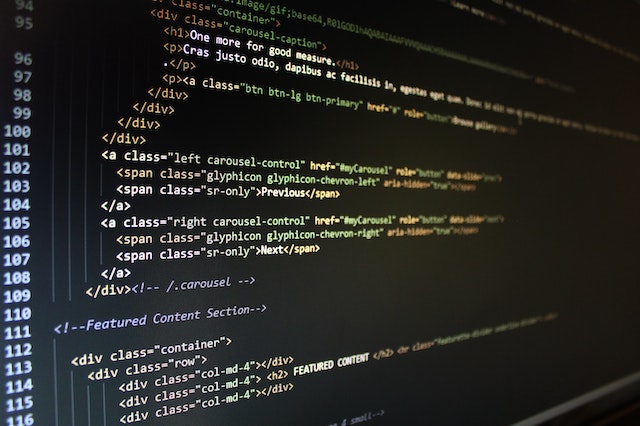Since 5 years ago, as coaches, we fought hard to have agile team members co-located, being fully dedicated to the project, by following the Manifesto’s principle “The most efficient and effective method of conveying information to and within a development team is face-to-face conversation”.
Then the pandemic arrived, and we learned how to help agile teams to work remotely, being smart in how to change our facilitating practices to help them remain united, their identity remain intact and their collaboration flow continue to be effective.
And now we have Generative AI, which promise is to augment creativity, increase productivity and improve decision making, but strongly challenges actual people work habits.
What could impact this amazing technology is going to have on Agile Teams, and especially on what pertains to “Individuals and Interactions”, the first Agile Manifesto value?
![]()
In today’s fast-paced and tech-driven world, organizations are constantly seeking innovative ways to enhance productivity and efficiency.
In that context, the integration of Generative AI (GenAI), which holds the promise of automating tasks, generating insights, and revolutionizing work processes, seems to a key capability for any organizations to remain competitive in the market and, in certain cases, being able to quickly fill the gap with their competitors.
The value and benefits the GenAI could bring can be summarized as follow:
- Enhanced productivity: Generative AI can automate some repetitive tasks, freeing up time for individuals to focus on higher-level thinking and problem-solving (e.g., automatic annotations, classification, text completion, etc.)
- Improved efficiency: By suggestin processes improvements and providing intelligent tools, Generative AI enables faster and more streamlined workflows (e.g., automated data processing, smart recommendation systems, workflow predictions and optimizations, etc.)
- Data-driven insights: Generative AI can analyze vast amounts of data, identifying patterns and generating valuable insights to inform decision-making and drive innovation (e.g., customer behavior analysis, fraud detection, product innovation, etc.)
However, as we navigate the post-pandemic era with remote work becoming the norm and not yet being fully certain whether this new working habit is, in absolute terms, better than colocation, it is crucial to examine how GenAI impacts the core principles of Agile approaches, with particular emphasis on the very first foundational value that regards Individuals and their Interactions.
What risks will we face and, on the other hand, what opportunities could be unfolded?
The Pitfall of Overreliance
Software engineers have today available amazing GenAI tools, embedded in their IDE, able to transform natural language prompts into code, perform multi-line function suggestions, context/style based coding recommendations, unit and functional test pattern pre-compiling for better test coverage, just to cite a few examples.

Product Owners, business analysts and product managers can rely on tools that are able to create new content with marketing and sales focus, help in maintaining product backlogs, natural language transformation into image and art outputs, etc.
Agile teams must remain vigilant to prevent the diminishing of human interactions; GenAI purpose should be to augment human capabilities, such as creativity and focus, not replace or limit them.
Decreased face-to-face communication
As aforementioned, agile approaches emphasize the value of face-to-face communication (after pandemic we can call this digital face-to-face communication) and close collaboration among team members.
However, the introduction of Generative AI tools, especially in distributed or remote work environments, could inadvertently reduce the frequency and quality of direct interactions.
The risk here is, for agile teams, to give in to the flattery of relying too much, and for long periods, on asynchronous communication and interactions through AI-powered systems, leading to a loss of spontaneous conversations and the nuances that come with in-person interaction.
Lack of contextual understanding
Generative AI systems operate based on patterns and data they’ve been trained on. In fact, GenAI, per se, may not fully understand the context, peculiarities and unique requirements specific agile projects and teams have.
Too much and extensive usage of AI-generated solutions without proper human judgment and contextual understanding and sensing, can lead to flattening of creativity, suboptimal outcomes and decision-making, leading t0missed opportunities for innovation.
Heavy dependency on AI expertise
As GenAI will become more and more embedded in organizations processes and habits, implementation and maintenance of related AI systems will require specific, and invaluable expertise in AI technologies.
Today, the availability of such expertise is very rare and could bring organizations to heavily rely on a really small group of individuals with AI knowledge, actually creating hard dependency on them that limits the autonomy and decision-making abilities of other agile team members.
This hard dependency exposes teams to the risk to disrupt the collaborative dynamics within agile team members limiting the principle of shared ownership, on the other side it undermines flow throughput and the ability to deliver value continuously.
Conclusion
As organizations incrementally embrace Generative AI and continue to adapt to remote work, it is vital to continually pursue a balance that preserves the core values of Agile.
However, the potential risks of decreased interactions, communication gaps, and too much reliance on AI can actually be mitigated by approaching, even more so for this new reality, with a human-centric approach.
By leveraging Generative AI as a tool to augment human capabilities, teams can unlock new levels of productivity while ensuring that the human-touch remains at the heart of any agile settings.

As coaches we have to push even harder on fostering a culture that encourages open communication, collaboration, and critical thinking, embracing the power of Generative AI and remote work, and seeing at them not as adversaries to agile principles, but as allies that empower teams to achieve greater heights within their agile contexts.


